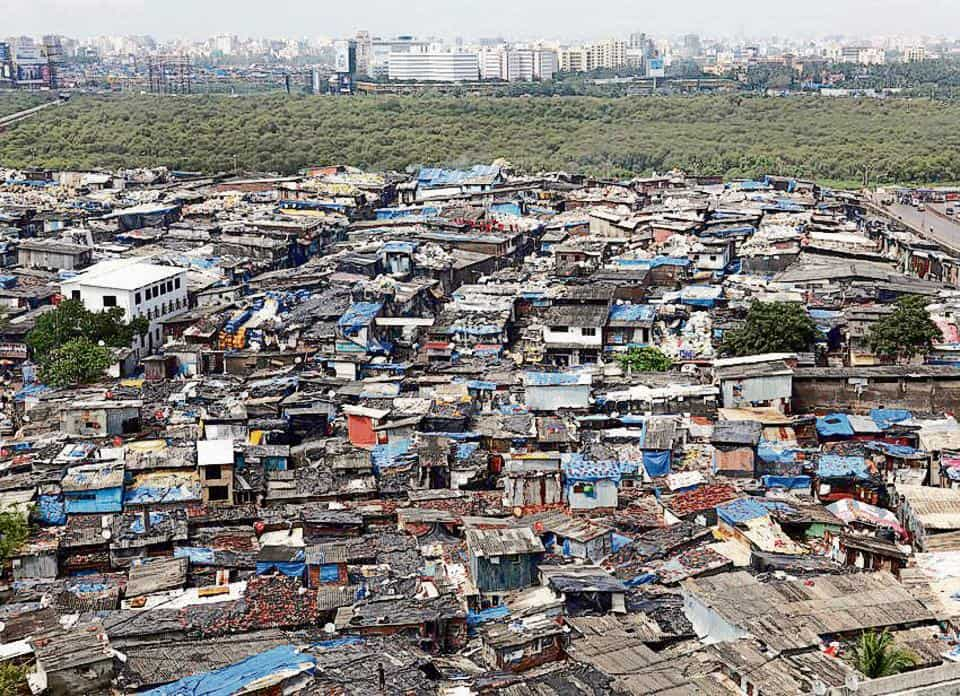By now, it is evident that India’s current housing conditions make it challenging to practice lockdown and self-quarantining effectively. For starters, our high population density and low open space per capita in urban areas make outdoor social distancing practically impossible.
Around 34% of India’s rural houses and about 27% of urban houses are congested, as indicated by a 2019 NSSO (National Sample Survey Office) study on housing conditions. Moreover, the World Health Organisation’s recommendation of using non-shared rooms and bathrooms (wherever possible) for self-quarantine is simply a luxury that many in India cannot afford.
While India has taken some steps towards affordable housing, future housing design and urban policy should take lessons from the COVID-19 situation.
They must consider how housing conditions and better urban planning might improve the overall quality of life. Indian households often share basic facilities (including rooms, kitchens, and toilets), making indoor social distancing incredibly challenging.
Four in ten Indian households use shared kitchens. Over half of the rest do not have separate water taps in their kitchens. A look at our sewage situation reveals that almost one-tenth of India, and specifically, 16.3% of urban India, lack exclusive access to a bathroom, and use shared facilities (NSSO, 2018).
For every ten households in India, three either have open drainage systems or none at all. This is a cause for concern in light of a recent study by the University of Stirling, which suggests that sewage could also play a role in increasing COVID-19 transmission risk.
Even after weeks of lockdown, infections are rising and the doubling rate of infection is worrisome. Currently, Maharashtra, Tamil Nadu, Delhi, and Gujarat have the highest numbers of cases in India, and among the highest daily increases in number of cases.
These states also have fairly high levels of household congestion. Data from the 2018 NSSO survey on housing conditions suggests that about 38% of houses in Maharashtra, 33% in Delhi, 32% of houses in Gujarat, and 30% of houses in Tamil Nadu are congested.
Alongside congestion and shared spaces, population density is another factor that complicates physical distancing. Consider, for instance, that in Maharashtra, a large number of people from the Dharavi region alone are infected. This is one of Asia’s largest slums, with a population density of over 270,000 people/sq km, and is several orders of magnitude higher than India’s average of just over 450/sq km. Most of India’s major cities, also among the most population dense in the country, are currently COVID-19 hotspots.
This has been the case in many other parts of the world, such as New York City, where the population density is around 10,000/sq km. For comparison, the USA, on average, has a density of 36 people per sq km; Italy has 205; and the UK has around 275.
India’s average house size is 46 square metres, even smaller than the average size of the smallest housing unit in NYC (around 58 sq m), and less than half the Organisation for Economic Co-operation and Development’s (OECD) average of 100 sq m. This could further limit people’s ability to self-isolate within their homes, especially if household sizes are large and rooms are shared. India’s open space per capita is also quite low in some of its urban centres. It is 0.87 sq m per capita in Chennai and 1.24 sq m per capita in Mumbai. New York City and London, for comparison, have 26.4 sq m and 31.68 sq m per capita respectively. The WHO recommends at least 9 sq m, whereas the UN recommends 30 sq m per capita.
Addressing household congestion and improving sanitation are already part of India’s Housing for All policies. While resolving these challenges in housing conditions is not possible during this pandemic, future housing guidelines and regulations could benefit from bearing such events in mind.
Having more tangible physical measures for a good quality of life in the context of affordable housing, and understanding how to operationalise these, should guide future policy. We also need to identify the challenges involved in doing so and devise strategies to overcome them. For instance, what would the minimum floor area per capita be, to maintain decent living conditions in affordable housing? Can we make land available to facilitate this, without further environmental destruction? How can we improve and increase urban open/green space per capita?
Several studies across the world are currently trying to understand what this would entail, including the Sustainable Alternative Futures for India (SAFARI) project at the Center for Study of Science, Technology, and Policy. SAFARI indicates that India might need an affordable housing target that is as much as double the current estimated number in urban areas, to be able to meet its true housing shortage.
India might also need 50% more affordable housing than estimated in rural areas. This estimate is based on higher adjustments for existing houses ageing over time and becoming unfit to inhabit, changes in the size of a household, and on factors like congestion and minimum space requirements for a decent quality of life. This works out to a revised estimate of potentially 35 million more affordable houses than the current target of around 41 million, by 2022.
Rethinking these metrics and their practical implications could serve the dual purpose of increasing the overall quality of life, especially in lower income households.
It could also help improve overall health and hygiene in Indian living conditions. Careful planning could potentially contribute to improving our resilience to future infectious pandemics. It could also better protect the country’s most vulnerable, at least from risks aggravated by unsatisfactory housing conditions.
Source:THE WIRE




